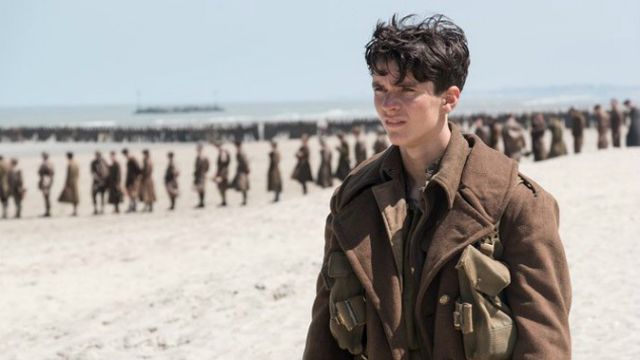“Dunkirk,” the latest epic scale feature from writer/director Christopher Nolan, is nothing less than a triumph of film making.
It’s brings to life a pivotal moment from the early stages of World War II in a way far different from other battlefield epics delivered in recent years. His approach to the material yields a cinematic experience that’s arresting and utterly harrowing in its authenticity.
It’s a film that’s sure to leave an impression, especially if you go in familiar with the true story behind the narrative.
What’s it about?
In May, 1940, in the early months of World War II, the British Expeditionary Force, along with French, Belgian, and Canadian soldiers, literally stood on the beaches of Dunkirk on the brink of total defeat. Surrounded on three sides by the steadily advancing German army, their backs to the English Channel, the Allied troops waited for deliverance from the beach by the British Navy.
The shallow waters and tide at Dunkirk made approaching the beach impossible for all but “little ships” with shallower drafts; thus, the British government issued a call for civilian ships to sail across the channel and pick up as many soldiers as they could and bring them home in a massive effort codenamed “Operation Dynamo.”
“Dunkirk” distills the collective experience of those 400,000 desperate souls through the eyes of a handful of characters in four specific places during the operation. On the beach, young soldiers like Tommy (Fionn Whitehead), Gibson (Aneurin Barnard), and Alex (Harry Styles) grow more desperate as they endure the waiting and dive for cover as the German Luftwaffe relentlessly bombs them.
Meanwhile, on “the mole”, the long, narrow pier extending from the beach into the channel that serves as the only means for the larger naval vessels to moor and take on survivors, a naval commander (Kenneth Branagh) and his army counterpart (James D’Arcy) do what they can to maintain an orderly evacuation. They stand along with their subordinates, all sitting ducks on the 18-foot-wide wooden plank, ripe targets for the aerial assault screaming over their heads.
In the water, one of civilian ships, piloted by Mr. Dawson (Mark Rylance) and his teenaged son (Tom Glynn-Carney) makes its way south across the channel in the direction of the ominous smoke rising from the shore just 26 miles away. And in the air, a pair of RAF Spitfire pilots (Jack Lowden, Tom Hardy) do all they can to protect the soldiers on the beach, making every bullet count against the German bombers and escorts in air-to-air combat.
The clock ticks, nerves fray, hopes of rescue dwindle and many, many men die. But resolve never fails, leading to what the British in the years and decades to come would come to regard as “the Dunkirk spirit.”

Capturing the experience
What audiences may find most surprising about Nolan’s approach to “Dunkirk” is that it’s devoid of the kinds of battlefield sequences we’ve come to expect from World War II films. While there was a battle raging as the French army slowed the advance of the surrounding German forces, Nolan avoids showing that action, keeping his focus squarely on the experience of the men on the beach, the boats in the channel, and the pilots in the air.
Nolan also chooses to jump between perspectives to tell the story, using fictional characters inspired by the real-life participants to dramatize the total extent of the experience. As a result, the storytelling is fragmented, events occur out of sequence, and its only late in the film that almost all the characters’ perspectives coalesce into a whole.



